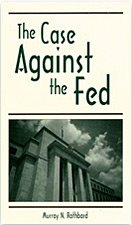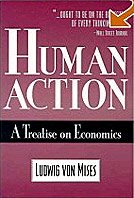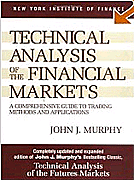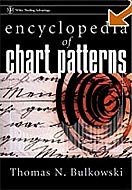Leading Canadian banker recommends gold, denounces fiat system
By Anthony S. Fell,
Chairman RBC Capital Markets
Vancouver Client Appreciation Dinner
Four Seasons Hotel, Vancouver
Thursday, January 18, 2007
.... I would not want to close off the evening without tabling one opportunity for all of us to make money, safeguard our wealth, and protect ourselves from the ravages of inflation over the next many years -- and that is gold bullion.
Gold bullion is a secretive, opaque market with little transparency. Gold can be volatile, is almost impossible to forecast on a short-term basis, and requires great patience, and, accordingly, it's not for short-term traders but rather for serious long-term investors.
Is gold a currency, a commodity, or a store of value?
The answer is all three, but gold bullion is primarily a currency and a store of value and is a hedge against fiat paper money and inflation.
As an economic consultant in 1966 Alan Greenspan wrote: "In the absence of the gold standard, there is no way to protect savings from confiscation through inflation. Gold stands in the way of this insidious process."
At Royal Bank we trade gold bullion off our foreign exchange desks rather than our commodity desks because that's what it's is -- a global currency.
As J.P. Morgan said in 1913: "Gold is money and nothing more."
It was Alan Greenspan again who said in a 1999 testimony before the U.S. House Banking Committee that "gold represents the ultimate form of payment in the world."
Gold bullion is the only currency worldwide which is freely tradable and which is unencumbered by vast quantities of sovereign debt and prior obligations.
Gold bullion is the one investment and long-term store of value which cannot be adversely impacted by corrupt corporate management or incompetent politicians -- each of which are in ample supply on a
global basis.
As a currency and a store of value gold has stood the test of many centuries.
At the current level of about $625 per ounce, gold has risen about 250 percent over the last five years.
Nevertheless, I believe gold bullion is now in the very early stages of a long-term secular bull market which will carry it to much higher levels over the coming decade.
I don't think there's any point in speculating how high the price of gold might go in the course of this cycle because no one can be that precise.
Suffice to say I anticipate a material increase.
History doesn't repeat but it's well to remember that from 1970 to 1980 gold rose 2,300 percent so it shows what can happen.
Reflecting on the long-term outlook for gold, it is important to fully appreciate that we now live in a world of fiat paper money.
Just as a reminder, fiat paper money, according to the Oxford Dictionary, is inconvertible paper money made legal tender by government decree.
The real question over the long term is: How much confidence do you have in politicians and central bankers to maintain the purchasing power of their currencies?
Since the U.S. moved to fiat paper money in 1971, the dollar has lost 80 percent of its purchasing power.
Since the Federal Reserve was established 93 years ago, the dollar has lost 98 percent of its purchasing power.
The new fiat U.S. dollar system has been in place for only 35 years -- not long when you consider the sad and sorry record of fiat paper money around the globe throughout the past century or two.
I would say the jury is very much out on this new system.
What will the record of the U.S. dollar be in another 20 or 30 years?
Recent history does not augur well and it could be much worse.
The U.S. annual trade deficit, now running at a rate of more than three-quarters of a trillion annually, or 6.3 percent of GDP, is a huge concern.
It's not prudent for the U.S. to depend on foreign bond buyers to finance domestic consumption.
Asian countries produce low-cost goods which are shipped to the United States, the U.S. ships dollars back to Asia, and then the Asians purchase U.S. treasuries.
One could say this is a giant international Ponzi scheme. I don't think this model is viable or sustainable. Asian central banks will not want to accumulate U.S. dollars at the current rate forever.
There is no free lunch. Virtuous circles like this, where everyone appears a winner, always come to an unhappy ending.
We have never before experienced imbalances in global trade and foreign exchange of the current magnitude -- not even close.
Major currency realignment is coming, and the longer it is delayed, the more the risk of the crisis. You can't hold back the tide.
The ingredients are here for major trouble in global financial and foreign exchange markets.
For all these reasons, I believe the stature and reputation of the U.S. dollar as a store of value have been greatly diminished and undermined over the past decade.
In light of all this, I believe gold bullion will gradually re-emerge as an accepted alternative asset and investment.
Over the past few years the price of gold has been in a clear uptrend against the U.S. dollar, the euro, the yen, the Indian rupee, and the renminbi.
I think this trend will continue and accelerate as events unfold.
Another factor is that I believe over the past decade there has been a substantial increase in systemic risk in the global financial system, which has benefited greatly from an extended period of incredibly low interest rates, easy credit, and what can only be described as massive liquidity.
History shows that such an environment can, and usually does, foster a degree of complacency.
In the financial and investment business memories are short and every generation has to learn the hard way.
Leverage in virtually every area of the financial markets has increased.
Financial products are now infinitely more complex.
There is, at present, an unwarranted optimism that the business cycle is a thing of the past, that central banks with infinite wisdom are in firm control and will be able to thread the needle between inflation and deflation, and that we will never again have a major foreign-exchange or financial crisis.
Well, I don't believe it, and the record shows that gold bullion represents a solid store of value in times of economic and financial distress.
Over the coming decade, global gold production will be static to declining while governments around the world continue to increase the money supply at a rapid rate.
If there is an "event" and a crisis develops, they will print money even faster.
The arithmetic is compelling.
Total gold production since the beginning of time is estimated at 5 billion ounces valued at about $3.2 trillion at current prices now scattered around the world in jewellery, artifacts. and gold bars in safety deposit boxes.
Annual gold production is now running at about 76 million ounces, which means that the above-ground stock of gold is increasing at about 1.5 percent per year.
In contrast, central banks around the world are probably printing money and creating credit at the annual rate of 5 to 10 percent per annum.
Recently in China the money supply has been increasing at a rate of 18 percent.
These numbers dictate that gold prices are destined to go much higher.
In short, the global supply of fiat paper money is increasing perhaps four times faster than the physical supply of gold bullion, and sooner or later this will be reflected in the market.
It's like a coiled spring.
Major gold companies are not replacing reserves and major discoveries are incredibly rare.
Investors forget that at most gold mines you have to move 35 to 40 tons of dirt and rock just to get one ounce.
On the other hand, fiat paper money can be printed by pressing a button on a computer.
It's quite interesting if you've noticed what's happening to paper money.
Not so many years ago millions of dollars seemed like a lot of money. Then we started talking about hundreds of millions and then we were thinking in terms of billions.
Then a billion became petty change and we started to talk in terms of hundreds of billions and now you hear the word "trillion" more and more.
The next stage will be hundreds of trillions.
Recently an "old master" painting was auctioned in New York for $94 million.
Just based on common sense, we have to ask ourselves: Is that painting really worth $94 million, or has the U.S. dollar become just like so much confetti?
I think we know the answer.
When Mr. Nardelli was recently fired as CEO of Home Depot he received a settlement of $210 million. The CEO of Pfizer received a settlement of $240 million when he was let go.
A condo in New York trades for $80 million.
What does all this say about the value of money?
Finally, there is a great deal of skepticism about the future of gold, which is a very positive factor.
Investors forget that bear markets start when the skies are blue and bull markets start when despair and apathy are in the air.
At present most major investors now regard gold and gold shares with apathy and even distain and are vastly underweight the sector.
The vast majority of investors are so short-term oriented they just don't see the big picture unfolding.
When the price of crude oil bottomed out at $10.70 a barrel on Christmas Day in 1998 and the front cover of the Economist magazine was forecasting a glut of oil and a price of $5 a barrel, you couldn't give oil or gas stocks away.
Now just seven years later, even after the recent decline, the price of oil is up five times.
What a difference a few years can make.
Similarly, with the price of uranium at $7 a pound at the end of December 2000 you couldn't give away either uranium or uranium stocks. Now that uranium has increased by 1,000 percent to $70 a pound, investors are driving uranium stocks to all-time highs.
The market just didn't see it coming -- it happens all the time.
So it is my view that, after a 20-year bear market from 1980 to 2000, the past few years represent a major positive turning point in the fundamental long-term outlook for gold bullion.
Gold is a hedge against inflation and, as a result of the excesses of the past 15 years, I believe there is more inflation in the pipeline than is generally anticipated -- perhaps quite a bit more -- just like the 1970s.
I believe any surprises on the inflation front will be on the upside.
To some extent, I regret to say, all paper currencies are becoming somewhat suspect, and accordingly it is my view that gold bullion, rather than being the barbarous relic described by John Maynard Keynes, may well become the asset of choice for many investors over the coming decade.
I have always been told to buy quality assets that are vastly undervalued and that have been ignored by the marketplace for a prolonged period.
Notwithstanding the modest rise in gold prices over the past few years, that is where gold bullion is today, and it represents a great opportunity.
* * *
Labels: gold















![[Most Recent Quotes from www.kitco.com] [Most Recent Quotes from www.kitco.com]](http://www.kitco.com/images/live/t24_au_en_usoz_6.gif)
![[Most Recent Quotes from www.kitco.com] [Most Recent Quotes from www.kitco.com]](http://www.kitco.com/images/live/au_go_0030_ny.gif)
![[Most Recent Quotes from www.kitco.com] [Most Recent Quotes from www.kitco.com]](http://www.kitco.com/images/live/au_go_0365_ny.gif)
![[Most Recent Quotes from www.kitco.com] [Most Recent Quotes from www.kitco.com]](http://kitconet.com/charts/metals/silver/t24_ag_en_usoz_4.gif)

















2 ΣΧΟΛΙΑ (COMMENTS):
A well thought of speech.
Global investoriat, PROTECT YOURSELF.
...true indeed.
FOREWARNED IS FOREARMED:
Those who know that something is coming are better prepared to face it than those who do not know.
(The New Dictionary of Cultural Literacy, Third Edition. 2002)
Post a Comment
<< Home